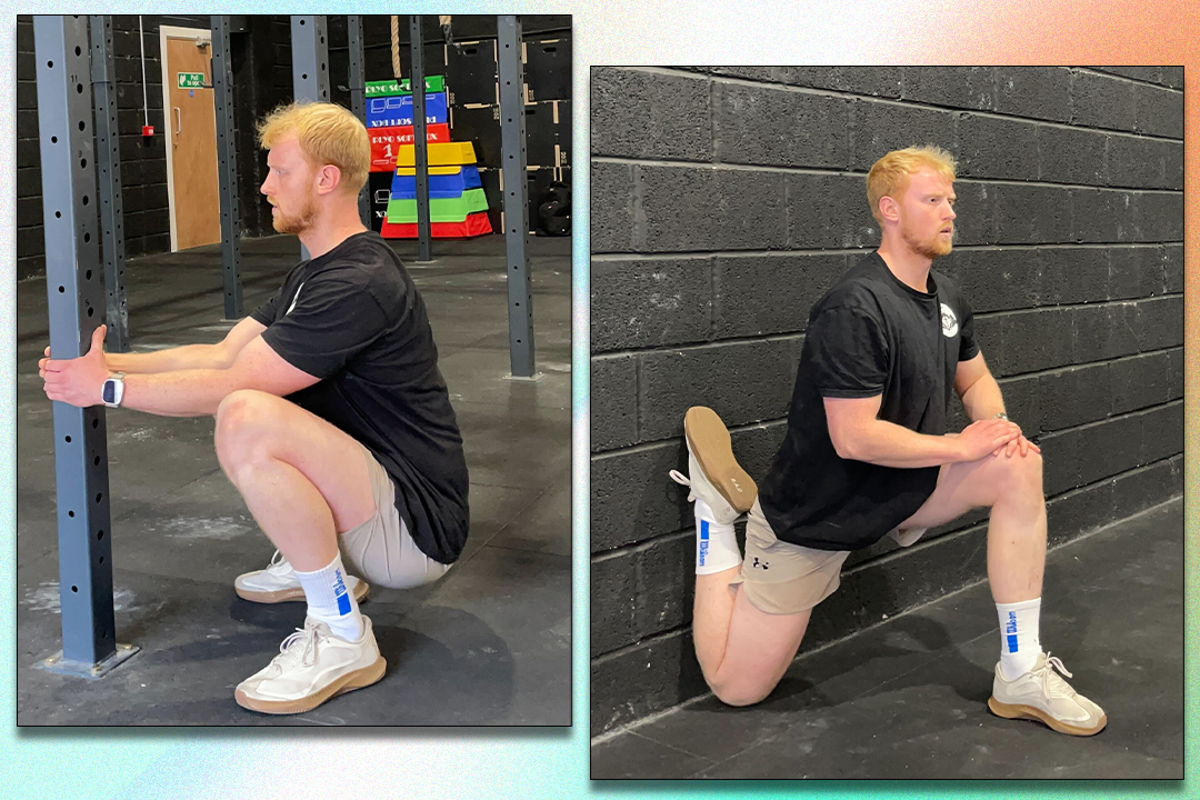If you want to add some mood-boosting movement into your day but for whatever reason, you don’t always manage to get a workout in, you don’t necessarily need to commit to a long run or sweaty HIIT session. Stretching can be a welcome alternative, helping soothe sore muscles and providing a welcome break from the stresses of a busy schedule. Everyone can benefit from stretching and the good news is that it’s easy to do.
If you’re wondering where to start, why not try this seven-minute routine from flexibility expert Tom Merrick – better known to his one million YouTube subscribers as the Bodyweight Warrior.
“For most people, the biggest benefit they’re going to get from [stretching to develop] flexibility is that feeling of losing restriction and gaining freedom to be able to move, even if that’s just bending over to pick up something or play with the kids,” he says.
Below, Merrick has shared five stretches he does every day and recommends for everyone to ease tight hips, improve shoulder health and improve flexibility in knees, hips and ankles.
The five stretches you should be doing every day
The 90/90
“The 90/90 is one of my favourite general stretches for the hips,” Merrick says. “It hits every single angle you’re going to require, covering both internal and external rotation of the joint, with the focus of bringing more movement and more awareness into the hips.”
He says that most people he sees are “very locked up around the hips”. As a result, “their back then ends up doing a lot of the movement for them”.
“Also, if you’re sitting a lot in the day, you’re going to get some compression and tightness of the glutes, and they then have an impact on other lower body positions like the squat,” Merrick adds. “If we get more movement into the hips, I’ve found that’s one of the best ways to help people feel more free and move better.”
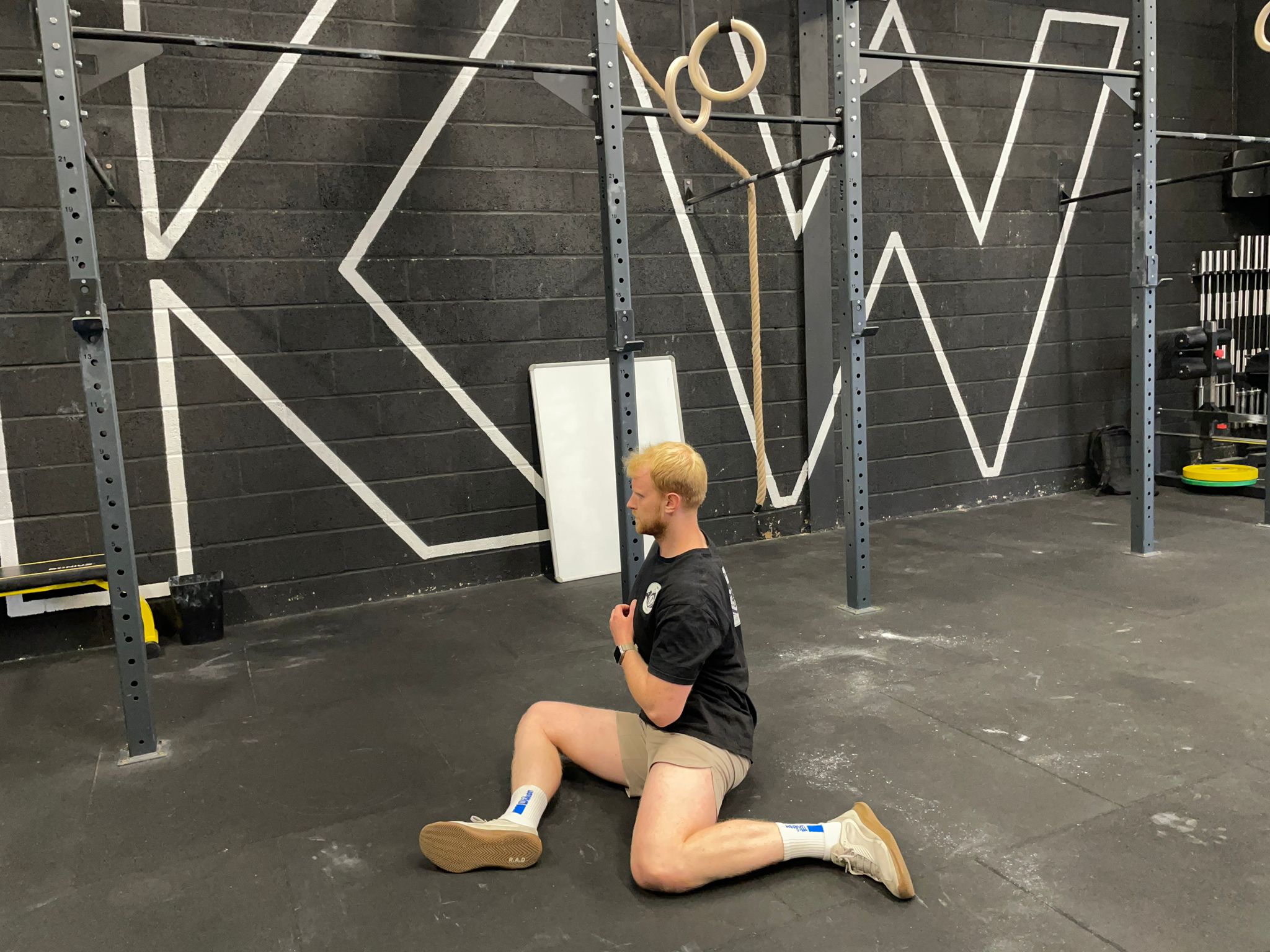
How to do it
- Sit upright with your right thigh perpendicular to your torso and your left thigh directly out in front of you. Your knees should both form a right angle, and your hands can be placed on the ground behind you for support.
- From here, lift both knees so they point at the ceiling, then allow them to fall in the opposite direction so your left thigh is perpendicular to your torso and your right thigh is extended in front of you.
- Continue to transition between these two positions, holding each side for a few deep breaths, for 90 seconds to two minutes.
- In the video above, Merrick demonstrates some methods you can use to elevate this stretch or target specific muscles and movements.
The couch stretch
This is another stretch that targets the hip flexors – the muscles around the pelvis, responsible for bringing your knees towards your chest – as well as the quadriceps on the front of the thigh.
“If you’re doing sports like running and cycling, or you’re doing a lot of sitting, it can cause this tightening up of the quad and hip flexors,” Merrick says.
“The nature of these activities means you’re encouraging that flexed forward, tightened position [of the hips]. The couch stretch provides more of an extended position – the opposite experience to the stuff you would normally do day to day.
“It’s also a really nice one because a lot of hip stretches won’t include knee flexion [bending], which is going to stretch our rectus femoris – part of the quad muscle.”
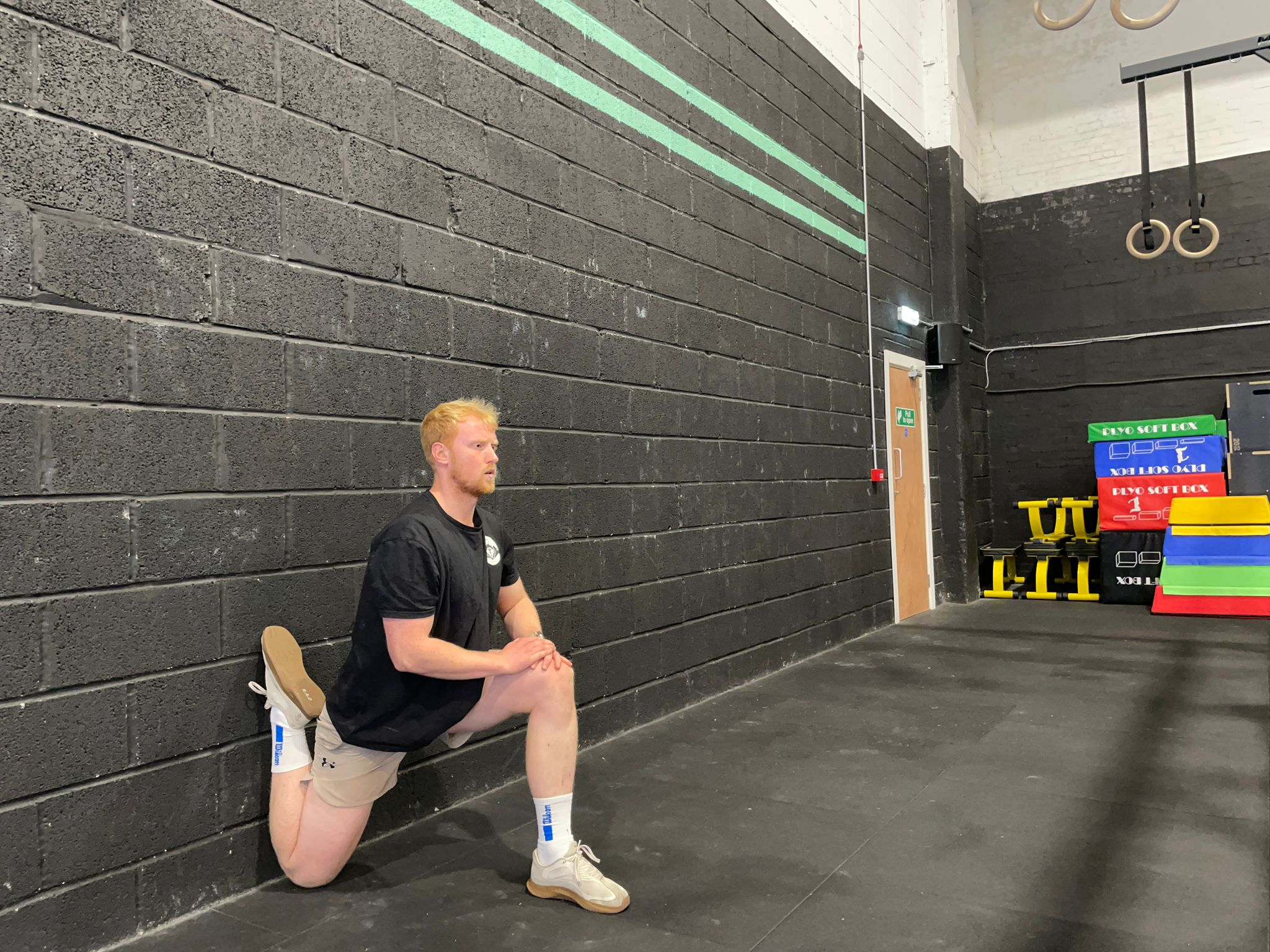
How to do it
- Place your left knee on the floor against a wall so your shin extends vertically upwards.
- Step your right foot forward so you’re in a lunge position, with your left thigh and torso forming a straight line. Think about tucking your hips by squeezing your glutes (buttock muscles), and trying to pull your rear knee forward to contract the hip flexors.
- Place your hands on the floor inside your right foot, beneath your shoulders, for support.
- Hold this position for 60 to 90 seconds on each side.
- You can deepen this stretch by moving your torso more upright.
Merrick says the couch stretch can be scaled to suit most fitness levels too. If you’re new to flexibility training, you can start by keeping your hands on the floor for support and leaning forward over your front leg. As your flexibility increases, you can sit more upright to increase extension at the hip and flexion of the knee.
The squat
This one might sound more like a strength-building exercise than a stretch, but Merrick says being able to hold a solid squat position “demonstrates a reasonable flexibility at several joints including the ankle, knee and hips”.
“This is a fundamental human position, and it’s a useful one to be able to get into,” he adds. “If you’re going to do any form of resistance training, you’re probably going to come across a squat, and if you have kids or want to pick something up from the ground, you’re going to want to be able to access this low position.”
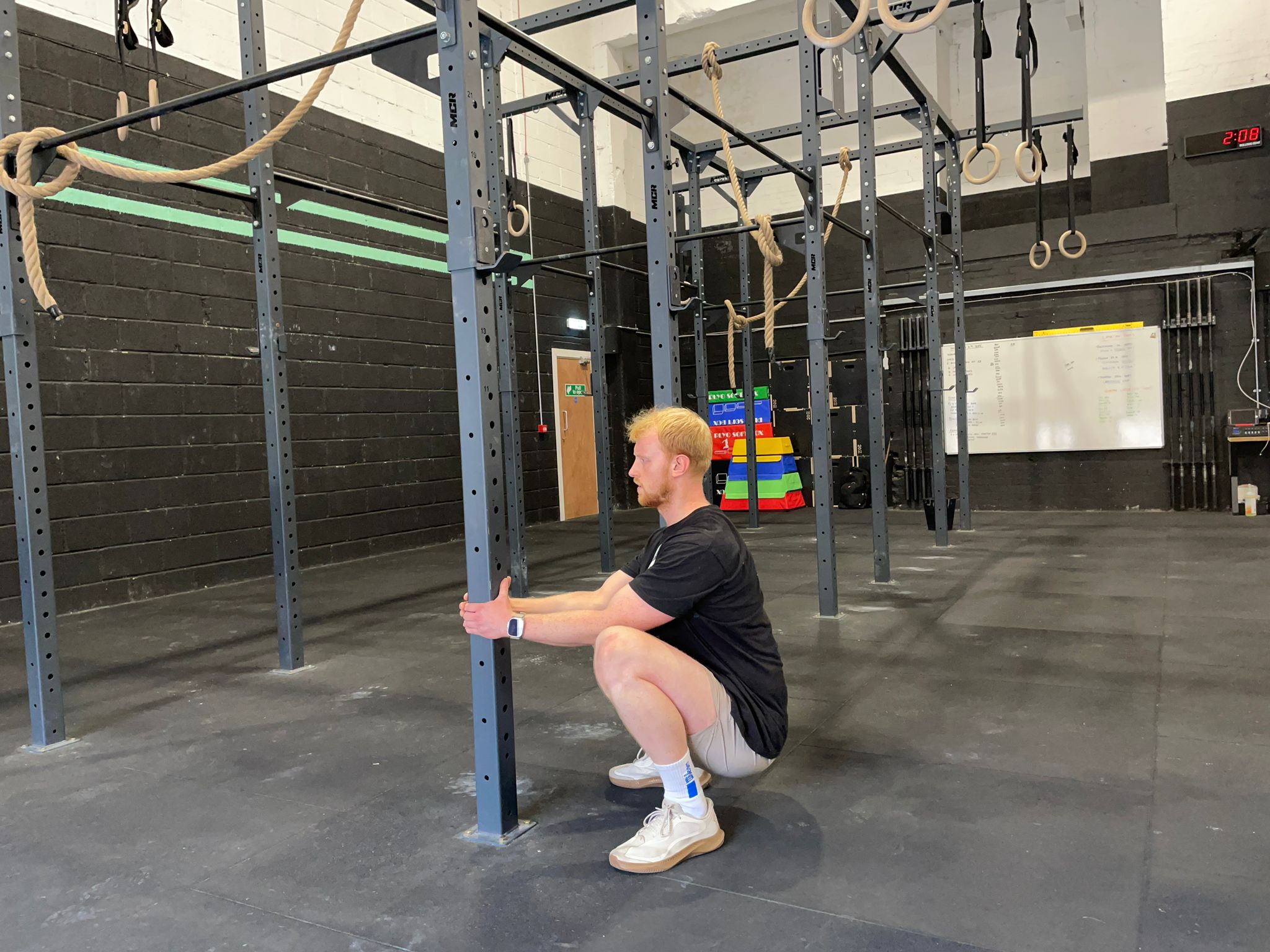
How to do it
- Stand with your feet roughly hip-width apart and your toes pointed slightly outwards.
- Keeping your chest up and your spine long, sink your hips down into a deep squat position.
- If you find yourself falling backwards, or you’re unable to keep your chest up and your spine long in the bottom of the squat, hold onto a sturdy anchor point in front of you for extra support.
- Hold this position for 60 to 120 seconds, or watch Merricks’ video for some variations to try.
Most people will find they fall backwards when they try to get into a deep squat position, Merrick says. This is due to a lack of flexibility at either the ankles or hips, which forces the spine to round and more weight to be placed towards the back of the squat.
To remedy this, he recommends practising sitting in a deep squat position while holding a sturdy anchor point in front of you, focusing on keeping your chest up and maintaining good positions.
“This comes down to the SAID [specific adaptation to imposed demand] principle,” says Merrick. “If you want to get better at X, do X more, so find a way you can sit in a squat comfortably, then you can spend some time wiggling about, moving, and trying to get a good stretch.”
Read more: Why squats should be a staple feature in your workouts, according to an expert coach
The hang
Like the squat before it, Merrick says the hang covers a lot of bases. It can aid overhead flexibility for improved shoulder health, stretch a range of muscles around the shoulder joint including the latissimus dorsi in the back and pectorals in the chest, and it provides decompression of the spine too.
“During the day we might get a lot of compression in the spine just from being on our feet, moving around, sitting down,” he explains. “Hanging allows gravity to pull that spine down and lengthen it.”
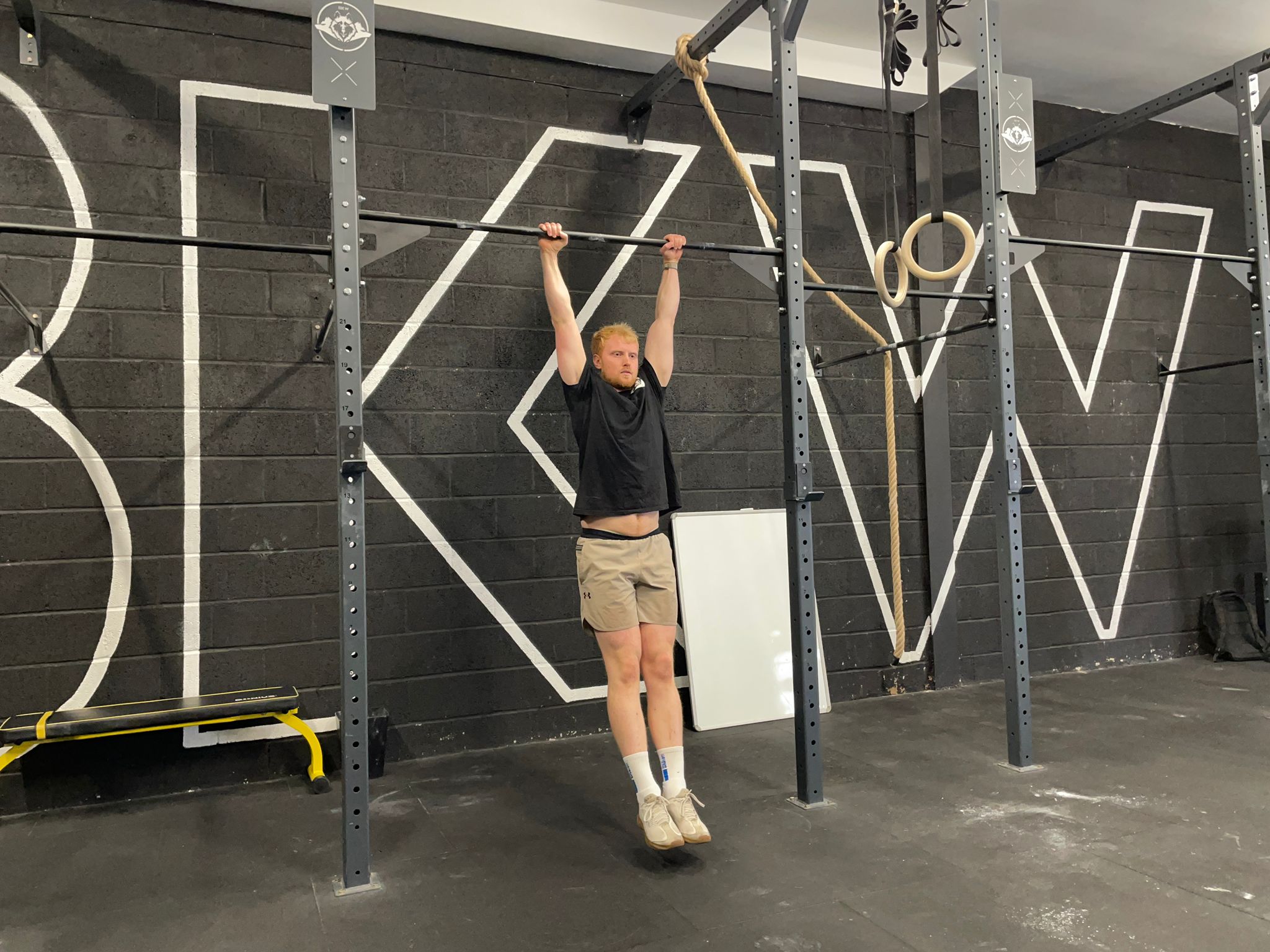
How to do it
- Grab a pull-up bar with an overhand grip and your hands roughly shoulder-width apart.
- Take your feet off the ground to support your weight through your grip.
- Think about pulling your chest in to create a straighter body position.
- Hold this position for 30 to 60 seconds.
- If you are unable to support your bodyweight, use a lower pull-up bar and keep your feet on the ground to support some of your weight.
- Slowly reduce the weight taken by your feet over time to progress this move.
Hanging can also develop your grip strength, which has been identified as an “indispensable biomarker” for older adults in a review published in the Clinical Interventions in Aging journal. This is because it indicates good generalised strength, bone density and other important health markers.
“We know that grip strength is a really important factor, one for sports but also for longevity,” Merrick says. “From hanging, we’re going to naturally build some strength in the grip – being able to hang for between 30 and 60 seconds would be a good target for most people.”
The elephant walk into pike hold
The hamstrings are the large muscles that run down the back of the thigh. In his time working with people to improve their flexibility, Merrick says tightness in this area is one of the main things that hampers clients’ freedom of movement.
“If you want to work on more advanced flexibility, the hamstrings are almost like a key. If you unlock them, it lets the hips tilt and move more freely, which then is going to make you feel more flexible in general for things like squatting. So stretching the hamstrings in one form or another is great.”
He says the elephant walk, where you reach towards the ground and straighten one leg at a time to stretch your hamstrings and shift your hips, is his favourite position for achieving this.
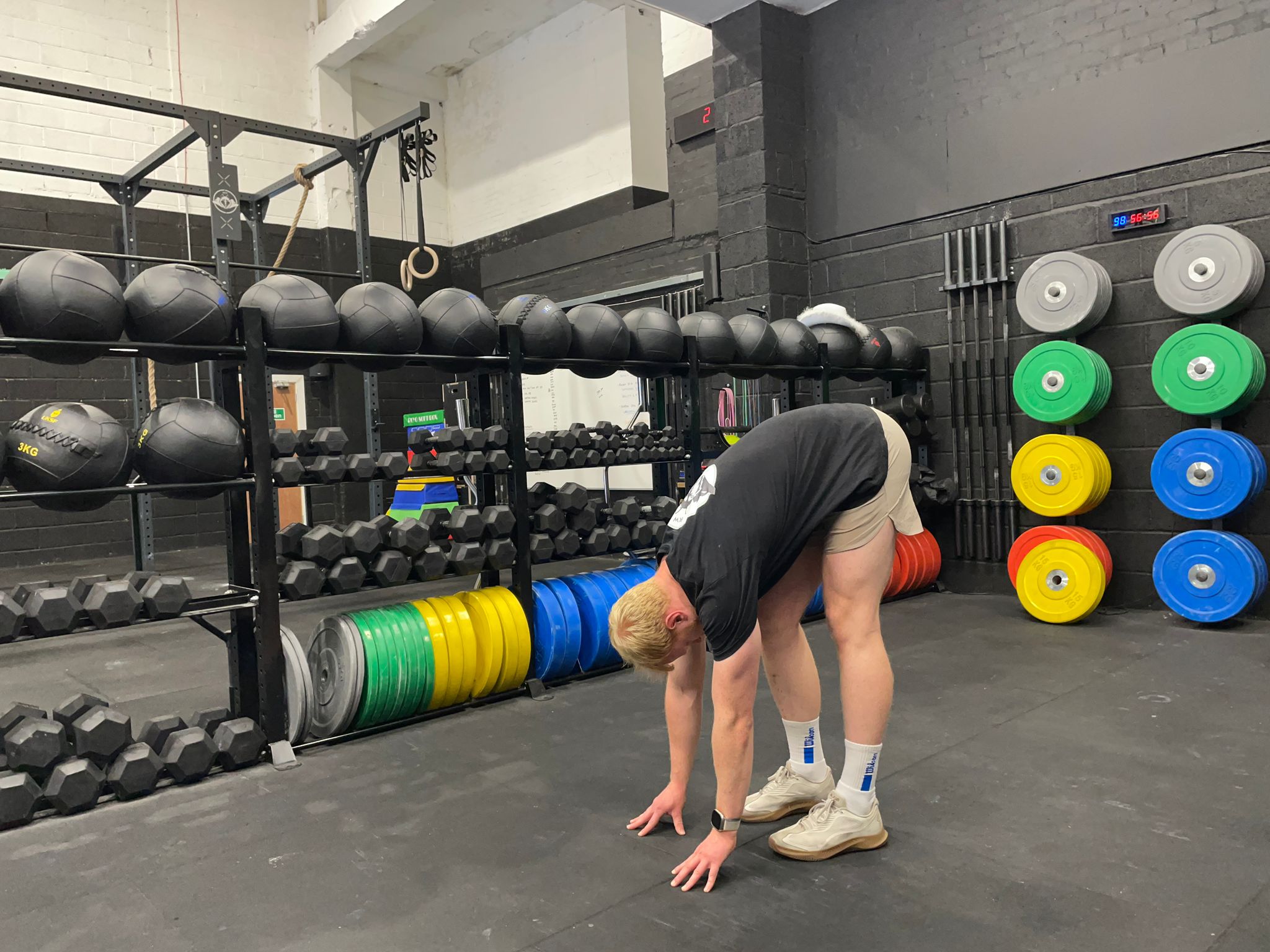
How to do it
- Stand upright with a slight bend in your knees, then reach your hands towards the ground in front of you.
- With your hands on the ground for support, straighten your left leg while keeping your right knee slightly bent.
- Hold this position for a second, then switch sides.
- Continue to do this for 60 seconds, then straighten both legs and try to place your hands on the back of your lower legs, using them to pull you deeper into the stretch.
- Hold this position for 30 to 60 seconds.
Should you try stretching?
Stretching shouldn’t be your only form of exercise – strength training and raising your heart rate with some form of cardio are key ingredients when cooking up a fit, functional body. But stretching can be a great way to enjoy a more relaxed form of movement while enjoying the many benefits listed above.
“It’s universal, everyone can benefit from stretching,” Merrick says. “The benefits really come down to the application. If you lift weights or do most other sports, the ability to put your arms overhead and squat down are two pretty crucial elements.”
“And we’re all going to have to pick something off the floor at some point, so you would want to be able to touch the floor at the bare minimum – ideally you would be able to get your palms down with straight legs. If you can do those three then you’re going to have more than adequate flexibility to take anything that life throws at you.”
Read more: These are the 10 best foam rollers for soothing sore muscles, tried and tested
